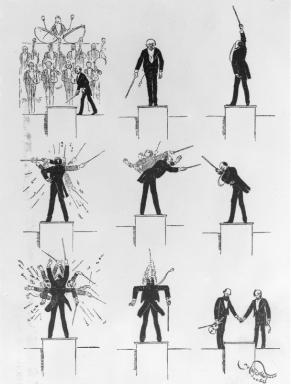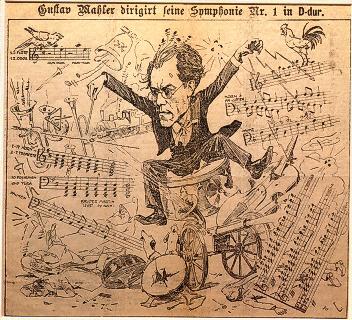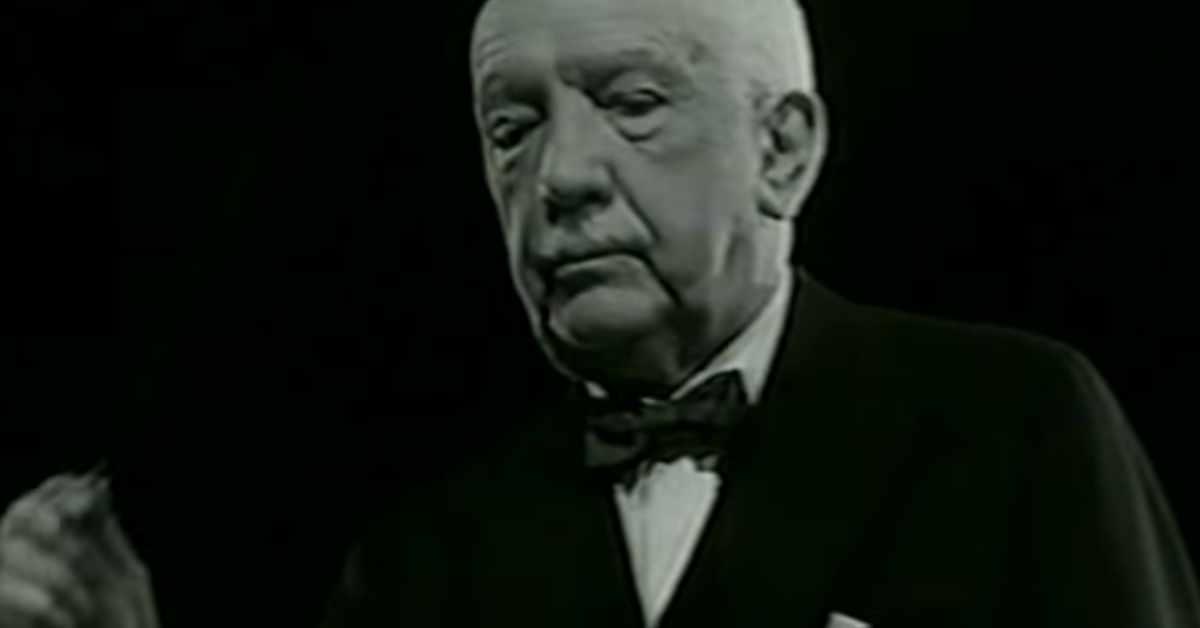What is the task of the left hand in conducting? Richard Strauss, a famous conductor and composer of the 19th and 20th centuries, had a clear opinion on this.
What you will read in this article:
“The left hand has nothing to do with conducting.
It belongs best in the vest pocket.”
Of the numerous surviving quotations from Richard Strauss, this is one of the most famous. Even during his lifetime, Richard Strauss was known for his gesturally concise conducting style in which the left hand played hardly any role. If you would like to see this for yourself, take a look at the following documentation excerpt:
From: “The Art of Conducting: Great Conductors of the Past.” (1994)
Surely you have noticed that the Richard Strauss conducting in this video has already reached a certain age (and a lot of experience in conducting his own operas). This point is important when evaluating Strauss’ conducting style because Strauss did not always conduct in the way you can see in the video. In fact, at the beginning of his career, his conducting style was considered extremely eccentric – which may have had something to do with his conducting training.
Richard Strauss' conducting training
Richard Strauss received important artistic impulses from Hans von Bülow, one of the first “star conductors” ever. Bülow worked as a conductor with the Meininger Hofkapelle and made the young Richard Strauss his successor there.
Hans von Bülow was known for his expressive conducting style. In this, Bülow was comparable to Gustav Mahler, another star conductor in the period around 1900, and both conductors were correspondingly in demand as motifs for newspaper caricatures:

Caricatures of Bülow (Original: Figaro 28 (1884), H. 50
(13.12.1884) – reproduced from the Austrian National Library) and Mahler (Original: Illustriertes Wiener Extrablatt 25-11-1900 – reproduced from https://de.mahlerfoundation.org/mahler/the-man/caricatures/, 27/NOV/2020).

At a concert in Munich, Richard Strauss performed together with his teacher Hans von Bülow, whereupon the newspaper critiques came thick and fast: Bülow’s conducting style was compared to “Swedish remedial gymnastics”, Strauss’ conducting movements were described as “seasick”.
This was aggravated by the fact that Richard Strauss’ father – Franz Strauss – was a highly esteemed horn player who understandably took little pleasure in the newspaper reviews of his son’s conducting. The following letter from Franz Strauss to his son Richard has survived:
“It is unpleasant to make such serpentine movements when conducting, and especially with a person as tall as you are one. Even Bülow’s conducting is not beautiful, and yet he has a small, graceful figure. […] I therefore ask you, dear Richard, to follow my advice and get rid of the foolishness.”
Letter from Franz Strauss to Richard Strauss from 26/OCT/1887.
Change of conducting style
It would probably be highly speculative to claim that the shock effect of the reviews and Franz Strauss’ well-intentioned advice would have been so great that Richard Strauss suddenly changed his conducting style. It is more likely that in the course of his decades of activity, Richard Strauss gradually became aware how little an orchestra actually “needs” – an insight that, incidentally, most conductors gain after many years of practical conducting.
Consequently, at some point the left hand disappeared into the vest pocket – and the orchestra played anyway. No wonder that the 58-year-old Richard Strauss advised his young colleagues in 1922:
“You should not sweat when conducting, only the audience should be warm.”

Jonathan Stark – Conductor
Hello! I'm Jonathan Stark. As a conductor, it is important to me that visits to concerts and operas leave a lasting impression on the audience. Background knowledge helps to achieve this. That's why I blog here about key works of classical music, about composers, about opera and much more that happens in the exciting world of music.




